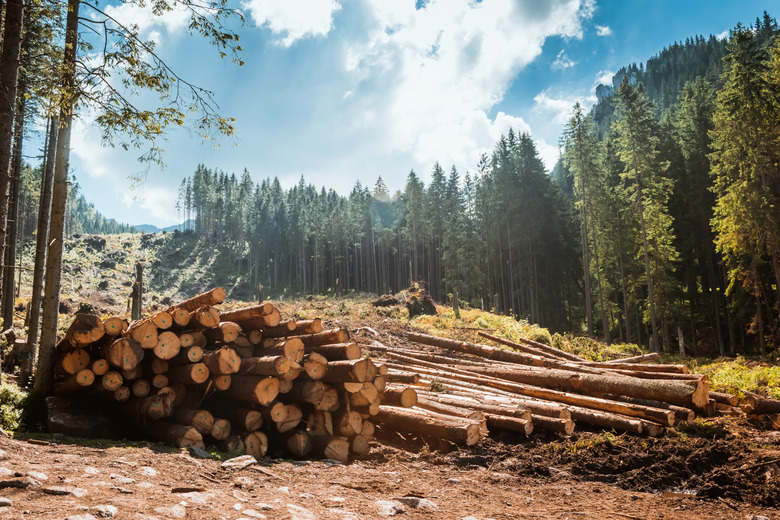Human Influences On The Temperate Rainforest
Although temperate forests are found in many latitudes between the polar circles and the tropics, the temperate rain forests are restricted to small areas where rainfall levels lay between 200 and 400 cm. Farming, mining, hunting, logging and urbanization are some of the human activities that have affected negatively this biome, resulting in biodiversity loss, pollution, deforestation and habitat loss and fragmentation. Home to many endangered and endemic species, temperate rainforests are found in areas of southern Chile, the west coast of Canada and the U.S., northern Spain and Portugal, Ireland, southern Norway, Japan, southern China, Tasmania and Victoria, in Australia and New Zealand.
Deforestation
Deforestation
Deforestation is an effect of farming, mining, logging and other humans activities, which affects many forests around the world, including the temperate rainforest. Intensive logging has left less than 10 percent of California, Washington and Oregon native temperate rainforest, while clearing the rainforest to cultivate the land has drastically reduced the temperate rainforests of Europe. In Australia, less than 3 percent of the original temperate rainforest remains.
Biodiversity Loss
Biodiversity Loss
Sitka spruce, the coast redwood and the Western hemlock are some of the tree species in the temperate rainforest, which are often large and produce economic valuable timber. In addition to deforestation, logging also contributes to the loss of plant species, such as the coast redwood, which is now vulnerable to extinction. Hunting and poaching can contribute towards biodiversity loss and the extinction of endangered animal species, such as the tiger, which inhabits the temperate rainforest of China.
The introduction of invasive species are also a threat to native biodiversity. In the temperate rainforests of Norway, the American mink escaped from fur farms and is today an invasive species that threatens the sea bird colonies. In North America, there are more than 200 introduced species in temperate rainforest areas, 30 of them considered invasive, including the shrub common gorse (Ulex europaeus) and the South-American grasses jubata (Cortaderia jubata) and selloana (Cortaderia selloana).
Pollution
Pollution
The pollution of large urban centers has also affected the remaining temperate rainforests. Domestic and industrial pollution contaminates water sources, contributing to the ecological unbalance between species in the food chain. Carbon dioxide and other pollutants released in the air causes the acidification of rivers and lakes, affecting not only aquatic species, but also their predators.
Habitat Loss and Fragmentation
Habitat Loss and Fragmentation
Human activities contribute to habitat loss and fragmentation in the temperate rainforests. By losing their natural habitats, some species become threaten and can migrate to other areas, affecting the balance of local populations. In South-American temperate rainforests, the small marsupial monito del monte, and the pudus, a small type of deer, have suffered habitat fragmentation. The Albert's lyrebird in Australia and the spotted owl in North America also lost part of their habitats, which has contributed to their decreasing population numbers.
References
- "Temperate and Boreal Rainforests of the World: Ecology and Conservation"; Dominick A. DellaSala; 2010
- Tarkine National Park: Tarkine Faces NewMining Threats
Cite This Article
MLA
Zinni, Yasmin. "Human Influences On The Temperate Rainforest" sciencing.com, https://www.sciencing.com/human-influences-temperate-rainforest-8480768/. 24 April 2018.
APA
Zinni, Yasmin. (2018, April 24). Human Influences On The Temperate Rainforest. sciencing.com. Retrieved from https://www.sciencing.com/human-influences-temperate-rainforest-8480768/
Chicago
Zinni, Yasmin. Human Influences On The Temperate Rainforest last modified March 24, 2022. https://www.sciencing.com/human-influences-temperate-rainforest-8480768/
